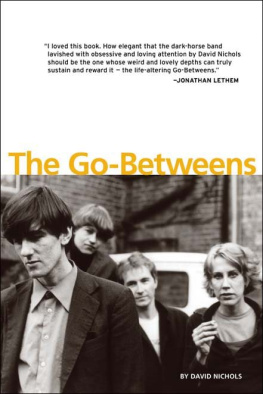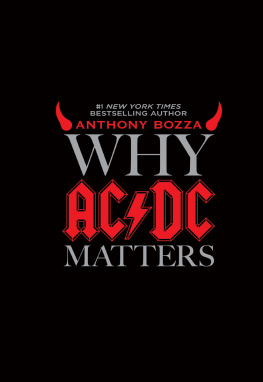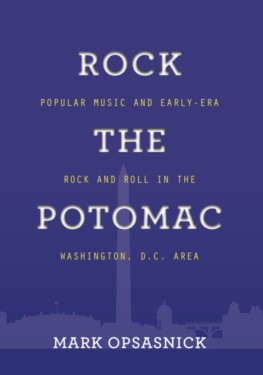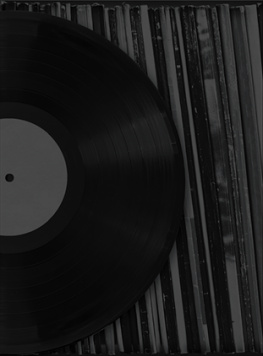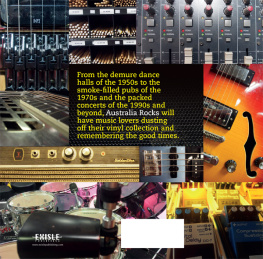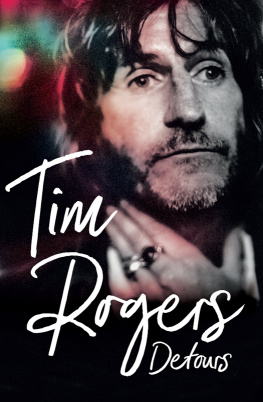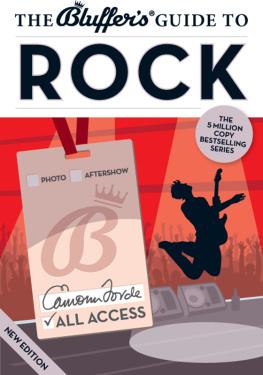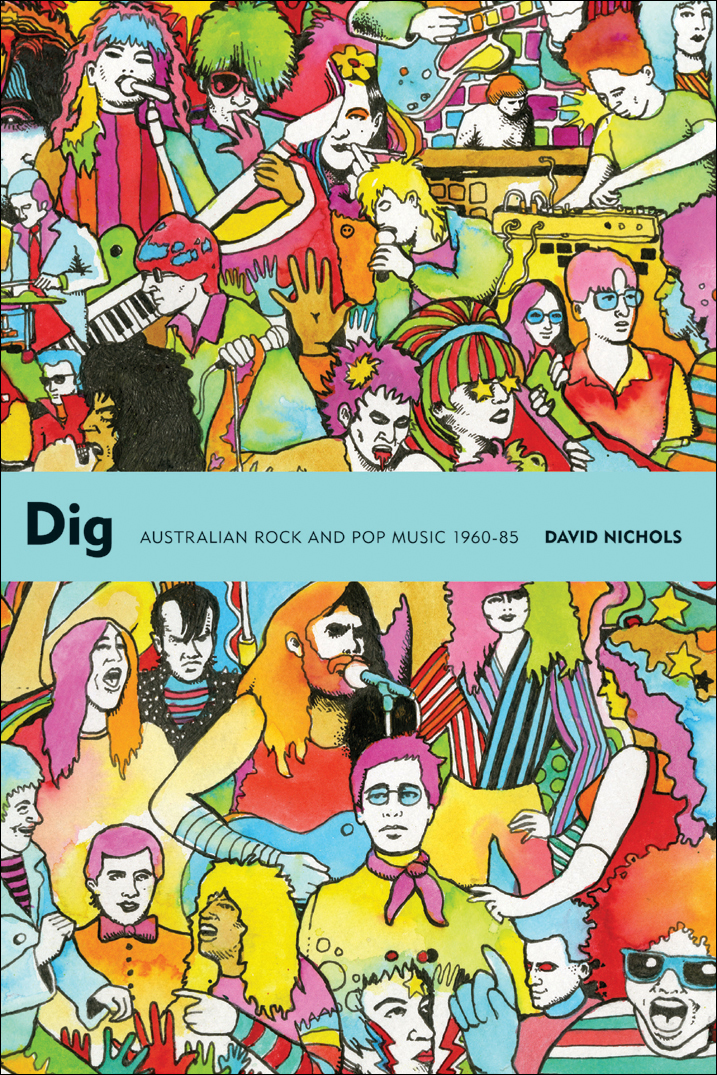Table of Contents
Guide

Dig is the product of almost a decade of writing, rewriting, reflection and calculated procrastination. Over this time many, many, many people have been extraordinarily helpful and engaged with the writing of the book. My chief informants people I directly interviewed for this work - were (alphabetically) Karen Ansell, Martin Armiger, Jen Jewel Brown, Janie Conway, Stephen Cummings, Stephanie Falconer, Wil Greenstreet (aka Billy Green), Mark Ferrie, Stefan Fidock, Megan Sue Hicks, Bruce Milne, Annalisse and Chris Morrow, Brian Peacock, Cleis Pearce, Pip Proud, Mike Rudd, John Topper and Ross Wilson. I did not interview Craig Hooper and Ed Kuepper as such, but both provided extensive written feedback and/or corrections on my narrative, which was then incorporated into the revised text.
Others who were helpful (once again, alphabetically): Stewart Anderson, Greg Appel, Guy Blackman, Annabel Bleach, Andrew Bonnici, Carla Bruce Lee, Francesca Bussey, Gavin Butler, Danny Butt, Michelle Cannane, Helen Carter, David Castles, Simon Castles, Kathryn Clarke, Penny Coad, Stuart Coupe, Saul Cunningham, Sophie Cunningham, Vera di Campli San Vito, John Durr, Duke Dinh, Barry C. Douglas, Peter Doyle, James Dutton, Toby Dutton, Frances Gibson, Keith Glass, Christopher Gorman, Fiona Graham, Dave Graney, Sadie Grant Butler, Stuart Grant, Roger Grierson, Simon Grounds, Peter Hogg, Harry Howard, Naomi Howe, Renate Howe, Philip Jackson, Neil Kelly, Caroline Kennedy, Tom Kristensen, David Laing, Randall Lee, Ted Lethborg, Darren Levin, Nici Lindsay, Cameron Logan, Bren Luke, Suzie Luke, Elizabeth McCarthy, Thomas Barry Bazza McCulloch, Ian McFarlane, Stewart McFarlane, Iain McIntyre, Rob McKenzie, Bernard McMahon, Paul McHenry, Jonathan Michell, Mary Mihelakos, Steve Miller, Clare Moore, Shane Moritz, Guy Morton, Ben OConnor, Claire OMeara, Stephen ONeil, Amanda Peacock, David Pepperell, Sophie Perillo, Miranda Picton-Warlow, Johanna Pigott, Edwina Preston, Andrew Ramadge, Keir Reeves, Casey Rice, Donald Robertson, Art Rush, Eddy Sarafian, Mia Schoen, Nick Seymour, Kate Shaw, Helen Slonek, Elizabeth Taylor, Sarah Taylor, Julian Teakle, Megan Tudor, Jennifer Turrell, Michael Van Vliet, Greg Wadley, Ian Wadley, Clinton Walker, Sari Wawn, Melissa Webb, Ash Wednesday, Julian Williams, Simon Williams, John Willsteed, Pat Wilson, Oleh Witer, Carmel Zappia.
Of the above, Stuart Coupe, Ian McFarlane and Eddy Sarafian deserve a second namecheck for their assistance with visual material used herein.
The staff at the National Library of Australia and the State Libraries of New South Wales, South Australia, Victoria and Western Australia were all immensely helpful and this book like another couple of thousand published this year and every year demonstrates how invaluable state and national libraries are to the intellectual life of the Australian nation and the globe. The staff at the University of Melbourne, Latrobe University and Deakin University libraries also provided assistance, and a special shout-out should go to the remarkable Hume Learning Centre library in Broadmeadows, one of the best local libraries I have known.
Katherine Spielmann and Steve Connell commissioned this book from me in or around 2006 and I am indebted to them for their innovative and committed approach to quality history and writing, be it about music or anything else! Steves dedication to keeping a wayward and unwieldy manuscript on course has been extraordinary.
Its been a long slog to get Dig to its current state, and knowing my mind the way I do, I have to assume Ive forgotten to thank some very important people. If thats you, let me know how I can make it up to you.
David Nichols
The comic strip on the facing page is a remarkable document of the Australian music scene just as it began an unprecedentedly strong period of internationalism. The first eight frames satirise John Paul Young alongside Molly Meldrum (Deafy Eardrum) for not being authentically Australian, for making disco records (obviously, these two crimes are related), and for making commercial inroads into minor global territories. The single-panel parodies that follow depict, in order, Ted Mulry (mocked for being mundane, apparently); Daryl Braithwaite (Sherbet, it is implied, have a generic international sound); Rene Geyer (presumably, the criticism is similar that Geyer sounds American); Mark Holden (at this time a shallow, flash-in-the-pan pop star, although the parodist is perhaps unaware that Holden, if nothing else, was a songwriter); and Kevin Borich; the others are self-explanatory.
The artist/critic, Richard Ford, is expressing frustrations that were commonly voiced at the time, but from a present-day perspective one is moved to ask, What did Australians want from their pop stars in the 80s? It is not helpful that Ford, while possessing a fine satirical pen, can only describe the positives in Australian music as good. But the implications are evident: Australians should appeal to Australian audiences (both artist and consumer have obligations in this regard); their music ought to be recognizably Australian (as we have seen many times throughout this history, this was always a contentious topic: was the Australianness a matter of lyrical content, was it inherent in the music itself, was it in the accent, or did it more generally entail limiting ones ambition to work in and for the Australian market?); and it was not possible to be good and commercial at the same time (although this too was often a matter of dispute). Similar thoughts are expressed, for example, by Dave Warner in his contemporaneous pronouncements on Shorrock and Braithwaite (see ).
This strip is rich in content, yet only the slightest traces of such attitudes survive today; indeed, they were already on the way out in the mid 1980s, when this narrative ends. International success for Australian groups increasingly became, if not de rigueur, then certainly less remarkable. Perhaps this was in part because Australians began to gain perspective not only on the extended history of Australian acts in the international arena, but it also happened because now that the recorded music market had become larger, broader, and more sophisticated it was possible for Australian music consumers to draw more nuanced conclusions about measures of success and the quality and standards of music being produced within Australia. Melbournes little bands hardly a nationally known phenomenon are a valuable marker at this time, when music professionalism, and the career trajectory of a musician broadening her or his fanbase leading to a strike at the international market, ceased to be the only option for a credible musician. Indeed, the indicators for credibility of the kind enjoyed by Air Supply or LRB (that selling a lot of records in the USA must necessarily be a good or honourable thing) gave way, in the minds of many tastemakers, to a diametrically opposite set of markers.
In the preceding pages I may have accentuated the pallidness of LRBs and Air Supplys pan-Pacific sounds, but there is undeniable skill involved in creating crafted pop; at the right moment, each band could be very good indeed. With all respect to the subjectivity of individual musical tastes, its a rare musical artist who creates nothing of value, especially when they get far enough along the track to produce records for an audience. Yet there has always been a divide between what is deemed worthy and what is dismissed as unworthy, even if the dividing line is drawn differently by each consumer. As countless examples in this book have shown Stefan Fidocks description of the criticism the Reels received for their
Next page

